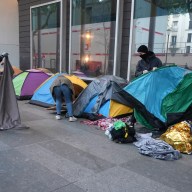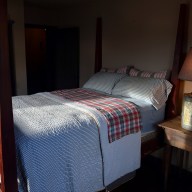Skiers and snowboarders can finally rejoice over the season’s chill, but the long-delayed snowfall won’t make it any easier to traverse the steep cost of winter sports.
Here are tips on shopping around and timing your next ski or snowboarding trip to get the best deals on equipment, lift tickets and lodging.
GEAR HEAD: Preparing for a trip to the snow can be daunting, especially for a novice trying to amass all the equipment, from skis, boots and poles — or a board and boots — to goggles and a jacket.
Start by repurposing things you already own: thermals, your heaviest winter jacket, a hat, gloves and sunglasses. Ski-specific clothing is rarely a necessity, though insulated, waterproof pants substantially boost the fun factor. Borrowing from friends can work well, if you know someone your size.
For equipment, bear in mind that even many experts rent their skis, boots and poles if they don’t get to the snow more than a couple times each season. You can save 20 per cent or more on rentals by reserving equipment in advance from your resort, says Vail Resorts Inc. spokeswoman Kate Lessman. Reserve online at rentskis.com, skibutlers.com or your resort’s website.
“Your paperwork is mostly done when you get into the store or rental shop, so you are in and out faster,” she explains.
Even more convenient in some cases is renting before you leave home. Ask at any local or national store that sells skis. This and an advance lift pass can help you save more than an hour each day you ski by skipping you past big lines.
If you’re ready to buy equipment — which can be more cost-effective, get you onto the lifts faster and ensure a better fit — start with end-of-season sales at ski shops and the resorts themselves. And next fall, check out ski swaps — typically at a sports arena, park or other big venue — where you can find deals on new and used equipment and clothing.
The season for swaps varies, so ask around at shops and resorts in your area. In California’s Lake Tahoe area, the Truckee park district hosts a swap in November. Outside New York City, the Potter Brothers ski shop chain hosts several from September to November. Many major resorts host them too. Be prepared to pay a small entrance fee.
GETTING A LIFT: With lift tickets running $60 or more per weekend day for adults, it pays to research discounts. Check out websites including liftopia.com, lifttickets.com and getskitickets.com. You can also peruse Craigslist or inquire with a local ski club to see if someone that lives near you is selling tickets.
Season passes are often less expensive, especially if you buy in early. But that’s almost always before the snow starts to fall so pencil out the cost of a pass with only minimum usage to make sure you’re getting a deal. It’s often more cost-effective to buy the three-day or four-day passes that many resorts offer, even if the daily discount is more modest.
Check hotels, sporting goods stores (at home and where you ski) and the chamber of commerce where you stay. Some resorts also offer resident discounts for locals, and others lower their rates for members of the military or college students. (Just check the blackout dates.)
Kris Surette, publisher of the Vermont skiing blog SkiMaven.com, also recommends skiing in the middle of the week and outside holiday periods to lower your rates.
LODGING LOGISTICS: For the best rates and selection, plan several months in advance. Lessman says the best prices are typically available from summer through late October. And Justin Blackburn with ski-blog.com notes that your money will go much further in some towns than others; he estimates that two days at Loveland, Colo., cost about the same as one day at the highest-end Colorado resorts.
Staying in a place with a kitchenette that’s not right on the mountain can cut your lodging costs in half, Blackburn says, while stashing trail mix, peanuts or candy bars in your backpack each morning can cut your snack bill by two-thirds, compared with ski lodge prices.
For lunch, Surette likes to tuck a peanut butter and jelly sandwich into her pocket because it tastes fresh regardless of temperature.
“This sandwich costs a fraction of what a sandwich or burger would cost at a resort, and instead I can treat myself to a sweet appetizer or beverage at the resort or in town,” Surette says.
And dinner? If you can’t cook at your place, or don’t want to, get off the mountain and head to one of the restaurants in town that locals patronize.
















